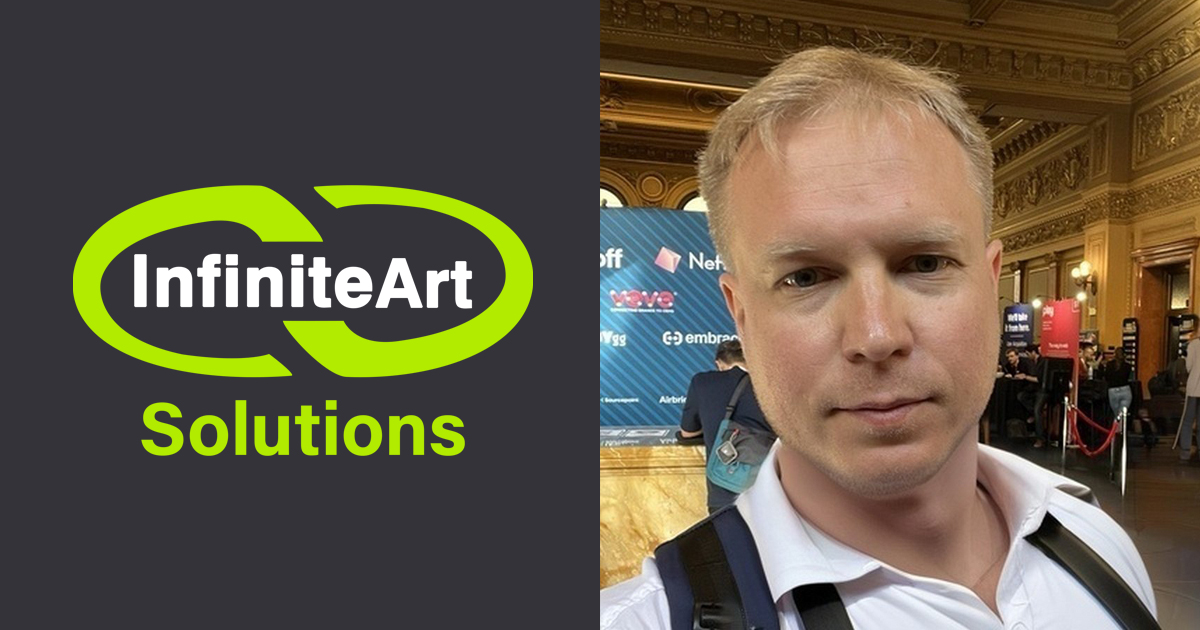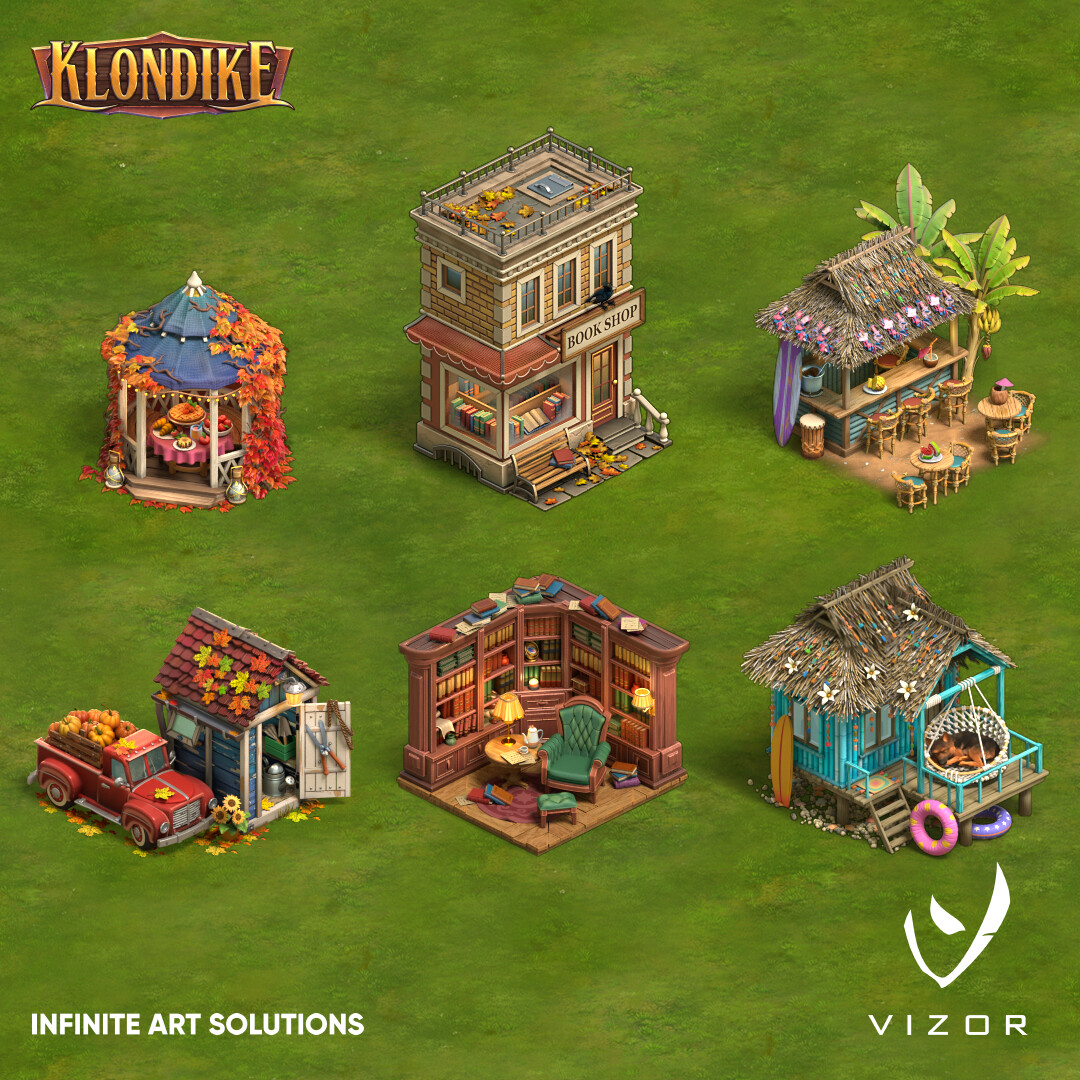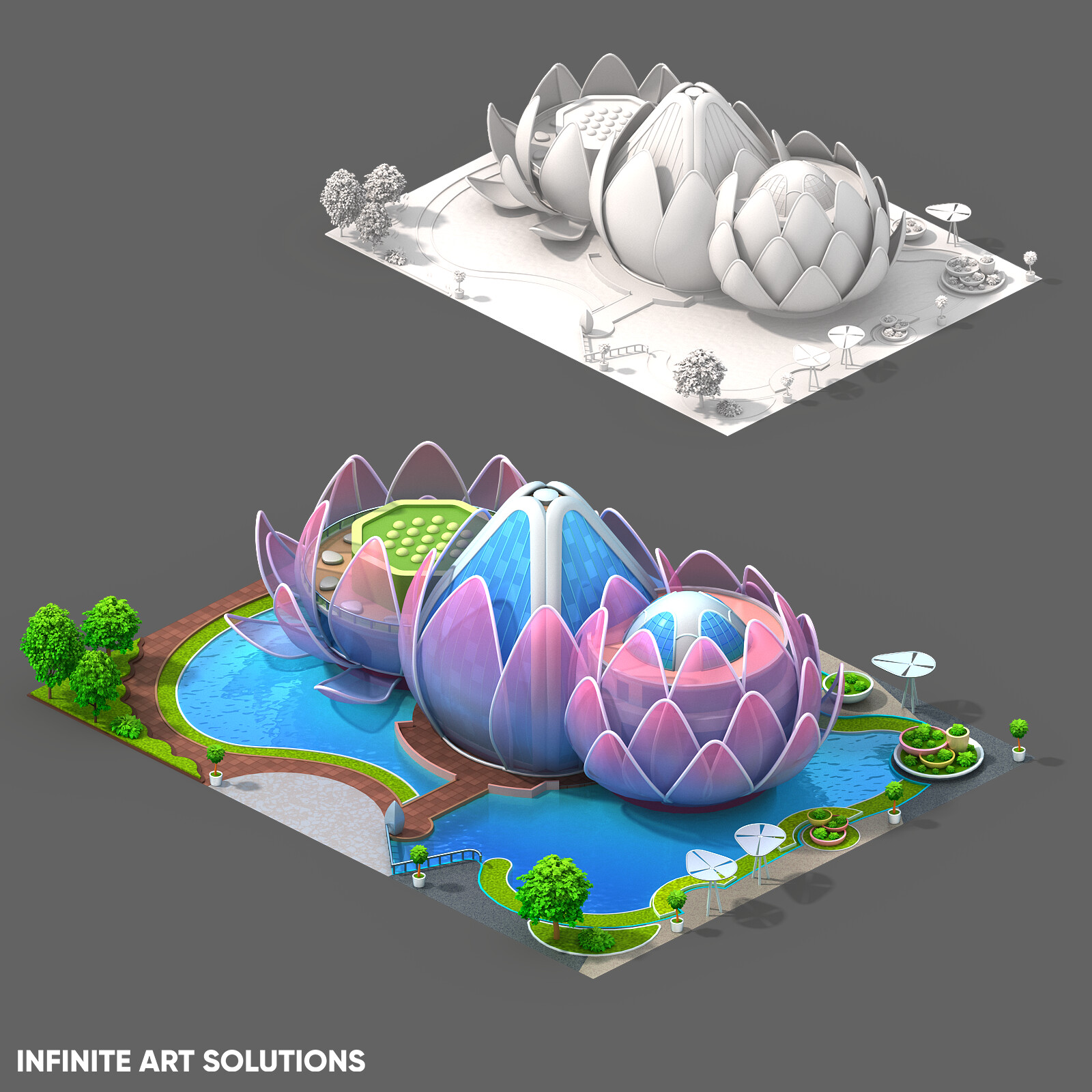We continue summarizing the results of 2024 with teams involved in the gaming industry. Up next is an interview with representatives from the outsourcing studio Infinite Art Solutions — CEO and co-founder Alexey Pechenin, Business Development Director Oleg Rozhkov, and Art Director Alexander.
How was the year for the company? What achievements stand out?
Alexey Pechenin
Alexey: I'm not going to hide it; the year was tough, but I’m glad that, despite all the difficulties, we overcame a lot. My colleagues — Oleg, our Business Development Director, and Alexander, the Art Director — will share how the year went. I’ll focus on our goals and achievements.
The unexpected primary goal this year was retaining key employees.
After spending 2023 like being in a life jacket surrounded by major Western companies, we did not anticipate that a couple of our major partners with international repute would suddenly halt announced projects and suspend collaborations indefinitely.
It’s easier to recall this now, but back then, it was a severe blow to our stability. We were forced to urgently restructure our development strategy. Luckily, it was precisely at this moment that we managed to make further advances in the iGaming market. You might say we were fortunate. We always aim for long-term planning, looking out not just for ourselves but for our partners too. Perhaps because of this, despite all the year’s challenges, solutions seemed to find us naturally.
“In uncertain times, no one can precisely know where the right answer lies,” but I’m convinced that caring for employees and partners is what makes our studio unique. The return of many former clients indicates that we are moving in the right direction. Trust and reputation are our core values.
How do you see the changes in the game outsourcing market?
Oleg Rozhkov
Oleg: Let’s try to recall the sequence of events this year and share how it all looked from our side.
The industry continued to be as volatile as a rollercoaster. The first quarter started with clients completely losing interest in manual 2D art. The work of juniors, idea generation, early concepts, and sometimes even nearly final works in specific genres and styles could suddenly all be shifted to AI.
This unexpected blow hit us hard: our 2D department lost its popularity amidst the hype around Stable Diffusion and Midjourney. It seemed as if everyone believed in magic outside of Hogwarts.
The second quarter saw cuts across the industry. Some couldn’t find a monetization point, while others lost it. Giants like Playrix and Playtika continued restructuring, not to mention medium and small companies. Several of our large partners either suspended outsourcing indefinitely or closed down entirely.
And just when that seemed like enough, the EXECUTIVE ORDER 14071 panic hit the industry, concerning the provision of web services to users from Russia and Belarus. Teams, Slack, and Confluence began notifying about immediate data deletions and blocks. We urgently searched for alternatives or workarounds.
There were even some amusing instances: Miro initially bid farewell to everyone, then later announced it found a way to continue operations without violating the order. HubSpot simply reminded users that everything was fine as they blocked a pool of IP addresses to stay compliant.
“Only when we lose everything, do we gain freedom,” — Tyler Durden, Fight Club. It's tempting to joke that this became the first rule of Russian outsourcing. But by the third quarter, interesting things started happening. Many clients who left post-February 2022 began returning, ready to communicate and do business.
By year’s end, there was an unexpected twist: manual 2D art became one of the most demanded areas again. Although AI found its niche, primarily as a task-setting tool, we entered Q4 with fully booked slots — for 2D and 3D graphics, animation, development, and even game design.
However, market shocks taught us caution: we’re recruiting missing team members gradually, avoiding a growth boom during temporary upticks. We’re still on a rollercoaster. It’s crucial to remember that even in joyous moments.
What requests do developers frequently make now?
Alexander: Artificial intelligence is becoming an integral part of the industry. In 2024, everyone pondered how to optimize processes using AI and what is best done manually. Various pipelines have emerged, and many have learned to adapt AI for creating art in specific styles for their projects. However, AI truly shone in concept development (for characters, locations, props).
When it comes to icons and interfaces, humans remain unrivaled. No groundbreaking innovation occurred in this area in 2024 — we hope for something exciting in the future.
The hype around Telegram Web Apps
Projects like Hamster Kombat and X-Empire once again drew attention to the gaming industry from those distant from games. Interest came both from players and indie developers. It was an interesting, albeit challenging experience. We managed to find common ground with clients. I believe those who caught the trend wave managed to attract traffic from an easygoing audience.
However, this trend seems to be waning. For example, “Capybara” showed promise as a complex idle-clicker, but it’s more of a local story that will last a year or two at most.
Focus on UI requests
This year, we saw a rise in requests for interface design. Many developers only focus on UI during the final stages of development, when the game is nearly ready but turns out to be inconvenient or unattractive to users. This is when our team steps in to assess the progress with fresh eyes and understand what’s important for the player.
It’s also worth noting that minimalism remains a key trend in interface design. Simplicity and conciseness help players better navigate the game, making interfaces intuitive and functional. Even Kingdom Come: Deliverance creators reduced the heaviness of arches and parthenons in their character menu, making it more user-friendly.
The emphasis on well-highlighted functionality is becoming a new aesthetic. Simplified logos, clean lines, and limited color palettes help emphasize key elements and create a visually pleasing user experience.
The use of animations and interactive elements has increased, making interfaces and game events more captivating. Animations help draw attention to important elements, guide players, and make interactions more seamless.
What trends in the game outsourcing niche do you expect to emerge or strengthen in 2025?
Oleg Rozhkov
Oleg: At the end of the year, we noticed a resurgence of interest in casual games. Industry colleagues also confirm this trend behind the scenes. The winter holidays will reveal how stable it is. The industry might return to the 2010–2012 trend, albeit with a noticeably changed approach to many aspects. There is a sense that in 2025, many major companies will begin actively exploring this direction.
In the next couple of years, we risk entering an era of uniform realistic projects on Unreal Engine 5. Such a phenomenon already occurred during the Xbox 360 era. However, given the global crisis, I’m inclined to believe that the trend toward realistic graphics will shift to fantasy and semi-realism. This change could manifest in various forms: from stylizing 3D as 2D to simplified and exaggerated expressions.
Of course, I am not predicting hard times for realistic projects, but to stand out in this area, they will need to be genuinely unique. You don’t have to look far for an example — “War of Worlds: Siberia” is a prime example of a realistic project. I even saw a forum debate arguing that during that time in Tsarist Russia there wasn’t yet a railroad through Siberia. Yet, the presence of aliens didn’t bother anyone.
Incidentally, this game was made with Unity, despite the trend toward Unreal Engine 5. Its realism is skillfully enriched with a romantic homage to Herbert Wells, adding a unique touch. Romanticizing different eras and a bit of fantasy never hurts, and sometimes even makes a project unforgettable.
What are the company's plans for the coming year?
Alexey Pechenin
Alexey: Our most ambitious goal is to automate routine processes within the company. We have already made significant progress in this direction, starting with automating content creation. Now, we are one step closer to deploying AI agents across all company departments. This step will allow employees to feel that automation is not only beneficial but also convenient for them.
Currently, one of the key success factors in the gaming market for outsourcing studios, in my opinion, is the ability to respond quickly to client requests. Competition among studios is growing, and AI is elevating art quality to new levels: faster, cheaper, and better than before. This cannot be resisted — we must transform as fast as possible.
This comes especially as Chinese companies are executing projects like Light of Motiram faster than the original IP creators.
Deglobalization might bring back the model where each market has its own version of a game from a new author. To prepare for such changes, we need to make neural networks as familiar a tool for our employees as Photoshop. Everyone uses it — from HR to programmers.
This year, we managed to establish a 2D workflow without using image2image and ControlNet. We decided to “persevere” through full automation, working solely with prompts. This approach reduced manual labor and streamlined generation for projects developed considering AI capabilities.
Another challenging and ambitious task has been developing a fully-fledged 3D pipeline using AI. Modern technologies already allow generating angles based on 2D images and creating rough models from them. For now, it’s more like a toy, but we aim to create pipelines that address current shortcomings, for props and full-scale game buildings. These technologies are already suitable for marketing, but our goal is to go further.
To accomplish this, we created an R&D department within the team. It’s not the easiest decision, especially as the margins for outsourcing studios have noticeably fallen due to legal nuances. Yet, as the saying goes, to advance, you must run. The new era dictates a need to constantly try something new and act unconventionally.
Looking back, I see I made the right choice in forming a small AI team a year ago. Today we are breaking new ground, and I am confident it will yield positive results.








